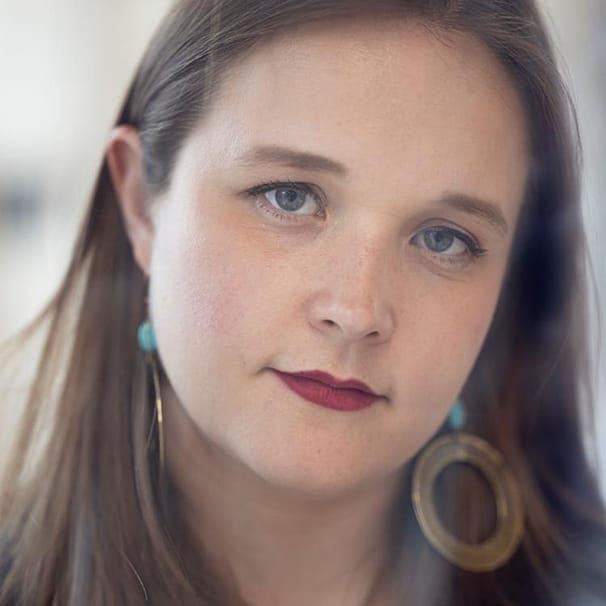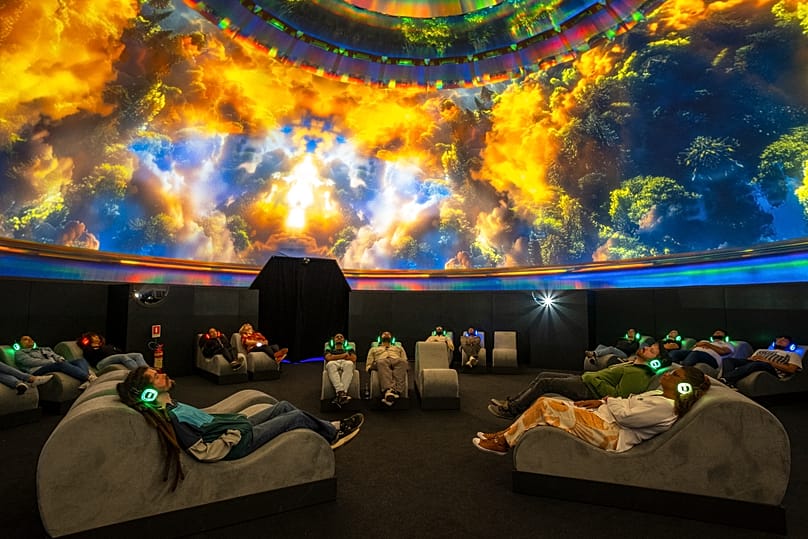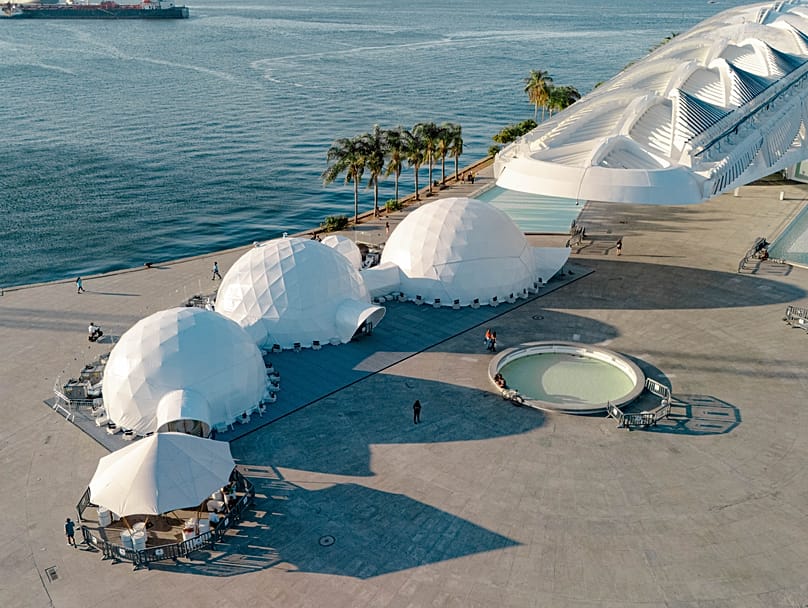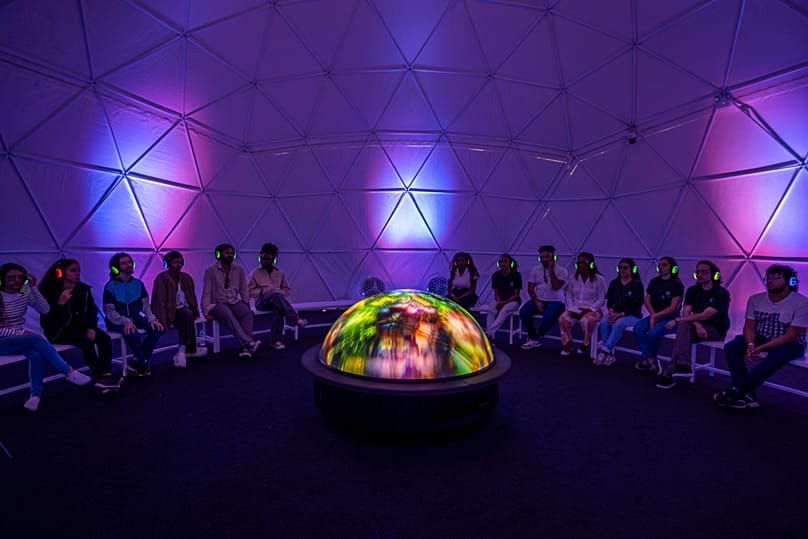Is ‘imagination activism’ the antidote to climate doom we’ve been looking for?
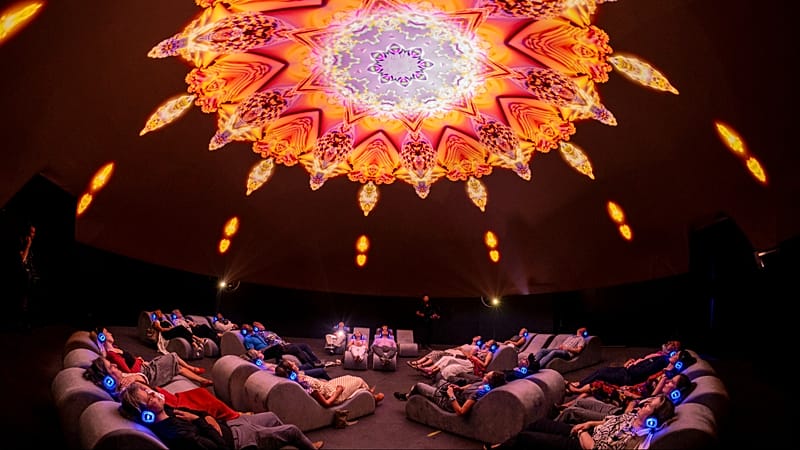
“I’ll believe it when I see it” is something cynics like to say.
Willy Wonka famously reversed that. In Willy Wonka and the Chocolate Factory (1971), his philosophy is: you’ll see it if you believe it.
I’ve never forgotten that film. The adults in the story - greedy parents, cynical reporters and bureaucrats - are literal-minded. The children are driven by whims and indulgences. Only young Charlie, who maintains his sense of wonder and hope, passes Wonka’s test. He’s rewarded not just for virtue, but for a capacity to see beyond the immediate.
Wonka’s world is built on an inverted logic, that we must imagine something before it can exist in reality.
A concept called ‘imagination activism’, coined by Phoebe Tickell, applies the same idea to tackling the climate crisis. The problem isn’t a lack of solutions, it’s the absence of a creative, collective vision for what a better future looks like.
Imagination as climate infrastructure
Humans are naturally sceptical and prone to following the herd. Evolution has wired us to question sudden threats and to copy the behaviour of those around us. Both strategies once kept us alive. But today, the same instincts can make us slow to act on climate change.
Imagination activism works with these tendencies rather than against them. When we witness others believing in and actively working towards a world we all want - one with clean air, seas we can swim in, thriving nature, and cheap, clean energy - the herd follows, and we turn our paralysis into curiosity.
Thinkers like Phoebe Tickell bring this to life. She argues that cultivating our imaginations to visualise what’s possible is not a luxury; it is essential.
Tickell describes imagination as a “muscle that’s been atrophied” by extractive systems such as education, capitalism and media. Her work focuses on rebuilding that capacity by collaborating with organisations or communities to shift the internal culture towards one that values creativity and long-term vision over short-term efficiency.
She emphasises the importance of expanding who gets to imagine. The ability to dream should not be reserved for a select few but should be accessible to all. It is what she calls “imagination justice”.
When the only stories we hear about climate are stories of collapse, it is no surprise that people retreat into despair.
Envisioning offers us a different pathway, acting as if a better outcome is achievable, even before we can see it.
Dreaming in Rio
Art is perhaps the most powerful tool for expanding that sense of possibility.
Back in 2014, artist Olafur Eliasson brought large blocks of ice from Greenland to public squares in cities like Paris and London to make climate change tangible and experiential. The exhibit then appeared at UN conferences in the subsequent years - popular because it wasn't just a spectacle, it confronted people with both urgency and opportunity.
With global attention turned towards the COP30 climate summit in Brazil this week, one new installation is making its mark.
In Rio de Janeiro, the Museum of Tomorrow is known as a cultural institution which explores the future of our planet through the lens of sustainability, technology, and human impact. Just outside is a new project called The Lumisphere, conceived by Visions2030.
This is no traditional exhibit, it’s immersive - consisting of three interconnected domes where light projections, surround sound and interactive storytelling submerge visitors into a multi-sensory journey through possible futures.
You wear headphones while travelling through a 360° space in a particularly intense experience somewhat akin to a hallucinogenic trip. It lifts you out of your body and into a literally effervescent world.
As you make your way through the domes, a Wizard of Oz-like voice bellows in your ears:
‘Imagine a world where clean water sparkles crystal blue, imagine the Earth’s abundance, dolphins and starfish, giant tortoises, osprey, eagles, butterflies, fireflies. Imagine jaguars and zebras, birds of dazzling hues, with so much for everyone. Imagine cities with amazing transportation and clean energy. What if technology combined with nature to make urban spaces magical?’
Of course, in longing for an imagined Eden of clean air and wild oceans, we’re often picturing a world without people - an earth scrubbed of its human messiness.
But the challenge is to imagine a future that includes us - flawed, creative, technological humans - living differently, not disappearing.
The Lumisphere asks visitors to imagine what a thriving planet might look and feel like for us, before inviting them to reflect on what choices could make those visions real.
The team behind the project even collaborated with the Institute for the Future (IFTF) to measure the impact the exhibit had on public imagination, agency, and belief. Preliminary results show that the experience left visitors more confident about the future. Time will tell if this sense of optimism continues throughout different geographies, as the Lumisphere is just at the beginning of a five-year global tour.
Beyond utopia
Writers like Rebecca Solnit or George Monbiot might frame imagination activism as wishful thinking.
Monbiot has written that the problem with some environmental narratives is that they soothe rather than mobilise, offering “emotional relief instead of political change.” He calls for “adult conversations” about power and responsibility rather than sentimental “love the Earth” messaging.
While in one of Solnit’s essays, she warns that hope and imagination must be active, not naïve or escapist. She doesn’t criticise imagination per se, but cautions against “false hope.”
Back in Willy Wonka, Charlie wins because he dares to believe, and that is what imagination activism ultimately calls for.
Carey Lovelace is the creator and founder of Visions2030. She tells me her goal is to “reawaken the human capacity to dream”, adding, “a radical stealth tool in the climate activist toolkit is the imagination. Having a dream is so motivating.”
Her colleague Fabio Scarano, curator at the Museum of Tomorrow, agrees.
“The crisis of imagination is the backbone of all crises, climatic, economic and humanitarian. We have a very hard time imagining futures that are different from the present - and it’s because we don't have better images to help us.”
The installation taps into a growing realisation among climate campaigners that policy alone is not enough to make change. It provides the cultural space to rehearse different possibilities before they exist.
In Brazil, where climate politics are now central to both national identity and global negotiations, that act of rehearsal feels particularly urgent.
Today


